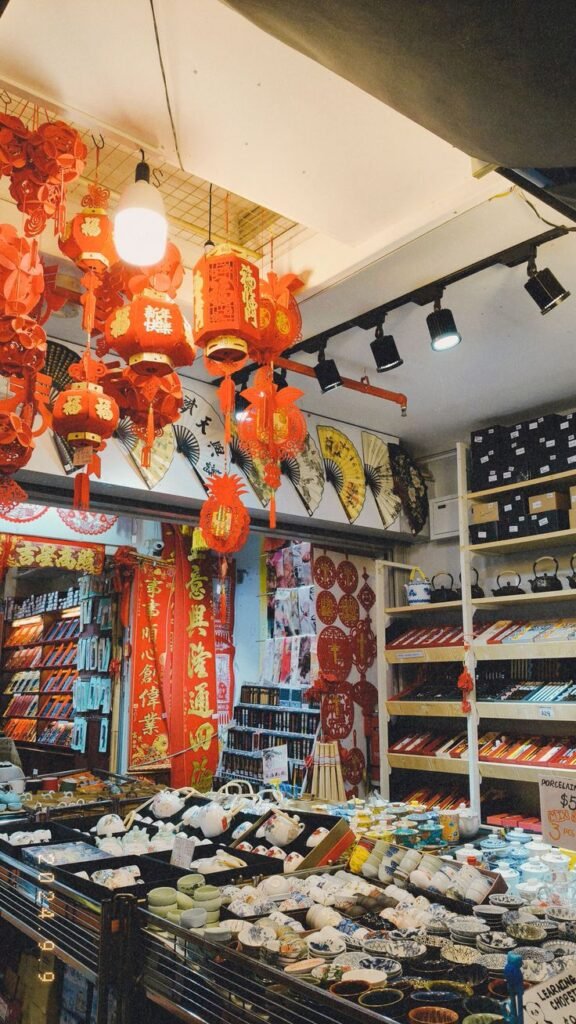The Force to be reckoned with of Worldwide Exchange

China has developed from a shut, agrarian culture into the world’s second-biggest economy, overwhelming worldwide business sectors with its assembling ability, developing working class, and consistently growing shopper base. Starting around 2025, China’s market keeps on driving worldwide development, with an impact that stretches across businesses, innovation, exchange, and money. The country’s special mix of state-drove free enterprise, unofficial law, and a quickly modernizing society makes the Chinese market perhaps of the most entrancing and complex on the planet.
In this blog entry, we’ll investigate the key variables molding China’s market elements — its verifiable development, current monetary approaches, development areas, open doors, challenges, and worldwide effect. We’ll dive into China’s part in the worldwide store network, purchaser market patterns, and how organizations can take advantage of the huge capability of quite possibly of the most compelling economy on earth.
Area 1: Verifiable Development of China’s Economy
1.1 Early Financial Establishments
China’s market history extends back millennia, yet its advanced financial improvement started decisively in the late twentieth 100 years. Before the last part of the 1970s, China’s economy was to a great extent agrarian, with a focal arranged framework zeroed in on collectivized cultivating and state-claimed enterprises. Nonetheless, this framework demonstrated wasteful and prompted financial stagnation.
Mao Zedong’s Time (1949-1976): Under Mao, China embraced communism and focal preparation, nationalizing industry and executing collectivization of agribusiness. While this made huge social changes, it likewise impeded financial development and improvement.
1.2 Change and Opening-Up under Deng Xiaoping
A defining moment in China’s market history came in 1978, when Deng Xiaoping presented the strategy of “Change and Opening-Up.” This shift from a shut, order economy to a more market-driven one set up for China’s financial marvel.
Horticultural Changes: The presentation of the family obligation framework permitted ranchers to have more command over their property and benefits, prompting a huge lift in farming efficiency.
Industrialization and Unfamiliar Speculation: Exceptional Monetary Zones (SEZs) were laid out in seaside urban areas, drawing in unfamiliar direct venture (FDI) and driving modern development. Producing turned into the foundation of China’s financial ascent, with China situating itself as the “world’s processing plant.”
1.3 China’s WTO Promotion and the Ascent of Worldwide Exchange
In 2001, China joined the World Exchange Association (WTO), which denoted an achievement in the country’s combination into the worldwide economy. This permitted China to emphatically expand its exchange and draw in more unfamiliar speculation, further improving its job as a worldwide assembling center.
Worldwide Commodity Pioneer: China turned into the world’s driving exporter, with its items flooding worldwide business sectors, especially in hardware, materials, and apparatus.
Development in Administrations: While China’s assembling area kept on overwhelming, the nation additionally made progress in fostering its administration area, especially finance, land, and innovation.
Area 2: The Design of China’s Market Today
2.1 China’s Blended Economy: The Job of State and Market Influences
China works a blended monetary model, some of the time portrayed as “communism with Chinese qualities,” where the state assumes a functioning part in the economy, while market influences likewise drive huge development.
State-Claimed Endeavors (SOEs): SOEs are a critical piece of China’s economy, especially in areas like energy, broadcast communications, and transportation. These organizations are firmly connected to the focal government, and the public authority furnishes them with endowments and backing, guaranteeing that they stay cutthroat.
Confidential Area: In equal, China has seen the ascent of a powerful confidential area, especially in tech and web based business, with organizations like Alibaba, Tencent, and Xiaomi earning worldwide respect. Privately owned businesses work in progressively cutthroat business sectors, however they actually face examination and guideline from the public authority.
2.2 Key Ventures Driving the Chinese Market
China’s economy is tremendous and various, enveloping a wide range of areas. Probably the main ventures include:
Fabricating: The foundation of China’s financial achievement, especially in hardware, materials, and cars. The nation stays the worldwide forerunner in assembling, creating merchandise at a scale and cost that couple of different nations can coordinate.
Innovation and Development: China’s tech industry has encountered fast development, driven by significant organizations like Huawei, Alibaba, and Baidu. Development in man-made consciousness, 5G innovation, and web based business has situated China as a worldwide forerunner in the computerized economy.
Energy and Green Innovation: China is the world’s biggest maker and purchaser of energy. It is additionally driving the charge in green advancements, including sunlight based energy, wind power, and electric vehicles (EVs).
Buyer Products and Retail: With a populace of over 1.4 billion, China has an immense and quickly developing shopper market. Internet business has upset the retail scene, with organizations like JD.com, Alibaba, and Pinduoduo overwhelming the web based shopping space.
Segment 3: China’s Job in Worldwide Exchange and Speculation
3.1 China’s Exchange Relations: A Central member on the Worldwide Stage
China’s ascent as a worldwide financial force to be reckoned with has had significant ramifications for worldwide exchange. The country’s financial approaches, economic alliance, and modern methodologies have reshaped the worldwide inventory network.
Belt and Street Drive (BRI): Perhaps of the most aggressive worldwide venture at any point embraced, China’s Belt and Street Drive expects to construct framework and advance exchange across Asia, Europe, and Africa. By putting resources into ports, streets, and rail lines, China is fortifying its exchange ties and expanding its impact universally.
Exchange Organizations: China is a key exchanging accomplice for nations all over the planet. The U.S., Europe, and developing business sectors all depend on China as a significant provider of products, while China is likewise a significant customer of unrefined components and items.

China’s job as a financial backer has likewise filled altogether lately. The nation has turned into a central member in worldwide consolidations and acquisitions (M&A), with Chinese organizations progressively securing unfamiliar firms and venturing into global business sectors.
Outbound Venture: Chinese organizations have made critical interests in areas like energy, land, and innovation in nations like the U.S., Australia, and portions of Africa. The public authority upholds these speculations as a feature of its procedure to lay out China as a worldwide financial pioneer.
FDI Inflows into China: China stays a significant beneficiary of unfamiliar direct speculation, especially in cutting edge enterprises. Unfamiliar organizations frequently put resources into China to take advantage of its enormous shopper market and financially savvy producing.
Area 4: Shopper Market Patterns in China
4.1 The Developing Working Class: China’s Homegrown Utilization Blast
China’s working class has developed dramatically throughout recent many years, making a gigantic purchaser base that is progressively forming worldwide market patterns.
Rising Livelihoods and Spending Power: With rising salaries, urbanization, and expanded extra cash, China’s customers are more prosperous than any time in recent memory. This has powered interest for premium items, including extravagance products, top of the line gadgets, and worldwide brands.
Web based Shopping and Internet business: The Chinese customer market has embraced web based shopping at an unmatched rate. Web based business stages like Alibaba’s Taobao and Tmall, JD.com, and Pinduoduo have changed retail, with portable installment stages like Alipay and WeChat Pay turning into the norm for exchanges.
Youth Market: The more youthful age in China, especially Twenty to thirty year olds and Gen Z, are educated and have an inclination for web based shopping, diversion, and computerized administrations. Their utilization propensities are moving towards encounters, wellbeing and health, and manageable items.
4.2 Moving Inclinations and Patterns
Chinese buyers are progressively inspired by wellbeing and health, manageability, and innovation driven encounters.
Wellbeing and Health: With rising wellbeing mindfulness, Chinese customers are putting resources into wellness, natural food varieties, and wellbeing items. The Coronavirus pandemic has additionally sped up interest in wellbeing cognizant ways of behaving.
Maintainability: Chinese purchasers, especially more youthful ones, are focusing closer on ecological issues. This has prompted an ascent popular for eco-accommodating items, electric vehicles, and feasible bundling.
Segment 5: Difficulties in the Chinese Market
5.1 Administrative Climate: Exploring Government Control
China’s market is intensely managed by the public authority, which forces severe principles on everything from unfamiliar venture to information protection and web restriction.
Government Mediation: The Chinese government assumes a functioning part in forming market elements, with approaches pointed toward guaranteeing social steadiness, controlling expansion, and safeguarding neighborhood ventures.
Information and Network safety Regulations: The Chinese government has forced severe information security and online protection regulations, which influence both homegrown and unfamiliar organizations working in China.
5.2 Segment Difficulties: Maturing Populace and Labor force Movements
China’s maturing populace presents difficulties to the nation’s work market, government managed retirement framework, and long haul monetary development. The nation faces a contracting working-age populace, which could have critical ramifications for the economy.
Area 6: The Eventual fate of the Chinese Market
6.1 Mechanical Development and Worldwide Authority
China’s future will be molded by proceeded with progressions in technol
